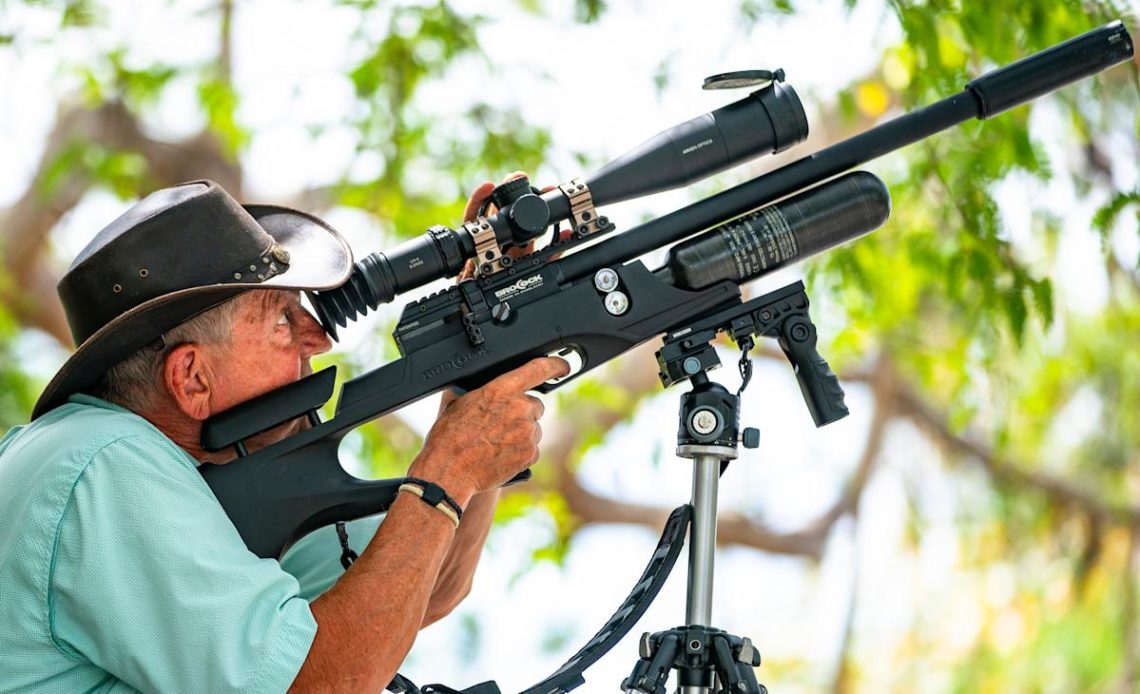MARCO ISLAND, Fla. – The battle lines were drawn the day John Johnson saw an iguana emerging from a burrowing owl hole.
On this barrier island off southwest Florida, Johnson had enjoyed watching the owl family next door, the little male “so cute, flying around gathering ribbon and tinfoil to dress up their burrow,” while mama bird saw to the business of nesting.
Then the big bully arrived.
“I watched this thing crawling out of their hole – iguanas are mostly vegetarians, but they’ll opportunistically eat eggs,” Johnson says, “while the parents were screeching and dive-bombing it.”
More: Python Q&A: What does it mean when you say ‘every python removed makes a difference’?
It wasn’t a fair fight, Johnson realized: a spiky, clawed dragon versus a teeny-feathered critter weighing in at 8 ounces, tops. And though the owls tried to defend their home, the iguana had done its damage. Eventually, the birds abandoned the burrow.
The reptiles, like the Burmese python, are an invasive species in Florida and have seen an explosive growth in population. The issue has persisted for more than a decade, prompting state and local officials to allow hunters – including Johnson – to put a dent in their surging populations and mitigate their threat to the state’s native wildlife and ecosystems.
Johnson has embraced this mission: “I looked (iguanas) up and I saw they have no natural predators here. And I said, ‘That’s not right … but maybe there is one. There’s me.’”
If you can’t beat ’em, eat ’em
Johnson, who runs a golf ad agency, knew he could make a difference in the field of iguana hunting. He was familiar with triggers and scopes from his time hunting as a young boy in the Pacific Northwest and figured he’d put his knowledge to use.
“I invested and I plinked around, and in 2023, I’d killed 255,” he said.
A new business, Down Goes Iguana, was born, with Johnson as its chief hired (air)gun. All with the blessing of the Florida Fish and Wildlife Conservation Commission state agency, which credentials Johnson and his fellow removers of invasive exotic pests.
Different hunters have different tools and techniques, but Johnson favors pneumatic guns like the .25 caliber Brocock Sniper XR because it is powerful and humane, he says.
“A soft lead pellet through the brainstem … they never know what hit them.”
Johnson shares the harvest. Crabbers use them to bait traps, Tampa Bay Discovery Center uses them to dissect, and he’s supplied an FGCU class studying worldwide cuisines with the raw materials for taquitos de iguana.
And sometimes he supplements his own protein intake. Last month, as egg prices spiked, Johnson demonstrated his home-grown solution, iguana egg scramble, in a TV news segment that made its way around the country, from Philadelphia to Chicago.
It’s a free breakfast, if you know where to find the iguanas, and just as tasty, he promises. “Eggs are eggs.”
What do they eat? ‘Almost anything they can get in their mouths’
Like Burmese pythons, veiled chameleons and Nile monitors, iguanas have joined a growing list of reptilian invaders in the Sunshine State, which has “more established nonnative reptile and amphibian species than anywhere else in the world,” the University of Florida reports. “Over 60 species of introduced reptiles and amphibians have established breeding populations (and) Florida has three times as many established species of introduced lizards as native lizards.”
Two iguana species in particular plague southwest Florida.
The black spiny-tailed iguana has colonized Gasparilla Island, where they outnumber humans five to one, undermining sea walls and dunes, gobbling native plants and gopher tortoise eggs and pooping all over the place. In 2006, Lee County paid renowned FGCU biologist Jerry Jackson $16,000 to study and strategize removal.
It’s an uphill battle, Jackson told islanders: “These animals eat almost anything they can get in their mouths.”
Farther south, the green iguana has settled on Sanibel, Fort Myers Beach, Cape Coral and Marco Island, spawning a cottage industry in trapping, removal and even guided hunts (for a fee, the Lizard Kings will take you out to bag your own trophy).
On Marco, the fight’s dragged on more than a decade, with the city sometimes budgeting for an official removal program, supplemented by private operators like Johnson. Though he’s only been in business a few years, he has an ever-increasing supply.
Last year, a friend bet Johnson he couldn’t average one a day (made even harder by the leap year) but turned out it wasn’t much of a challenge. “By the end of May, I passed the 366 mark and by the end of the year, I was at 730,” he says. Since he started, Johnson estimates he’s taken out around 1,500.
Prolific a killer as he is, “You’ll never pay the mortgage with iguana money,” Johnson says, “but you can buy the coolest toys” like air guns with night vision, video-recording scopes and breathtaking precision. “My PCP air gun at more than 50 yards can hit a fingernail over and over again,” Johnson says.
Johnson’s bread and butter is photographing golf courses around the world. It just so happens he enjoys a bite of eggs to go with that bread and butter – iguana eggs. And why not? Iguanas themselves are often found on tables in their home range of Mexico through South America. “Chicken of the trees, they call them,” Johnson says.
Client Sally Riley shudders at thought, she just wants them gone. “They’re gross to look at and I don’t want them on my house.” Or in it.
That’s why she’s happy to have found Johnson, after two false starts with other companies. “He came right out and killed two the first time, at least.”
Safety first is Johnson’s policy. After telling the police department where he’ll be, he arrives in a bright visibility vest. The idea is to be as obvious to humans as he can, lest he be mistaken for something sinister, Johnson says. “Every time I pull out the gun, I try to be as conspicuous as possible so people know what I’m doing.”
Then he gets to work. He’s picked them off docks, seawalls and roofs charging by the head: $50 for first; $25 each additional per trip. “And if I come and I miss, no charge.”
Johnson’s got that work cut out for him. Iguanas are prolific breeders, with each female capable of producing up to 70 eggs once or twice a year. The larger males, often with spiky manes and leathery beardlike adornments called dewlaps, keep harems of a dozen or so females. “Do the math,” Johnson says. “It’s hard to make a dent.”
Watch: Video shows cold iguana falling from tree in Florida then getting bit by cat
Fighting against a ‘crazy increase’
Marco’s iguanas have only been a problem for about 50 years, when they started stowing away in produce shipments or getting turned loose by disgruntled pet owners.
“You don’t hear any old boy iguana stories because they were never here before the 1960s,” Johnson says. “In the last 10 years, Marco has seen a crazy increase.”
Besides Johnson and his colleagues, the only thing that stops them is cold weather, which stuns, then kills the creatures. But as the freeze line moves north, so can the iguanas, he says. “They’re now in central Florida, devastating crops.”
He realizes they’ll likely never be completely eradicated, but he’s happy to make a hearty dent.
“Some guys fish; some guys golf – everybody’s got their thing,” he says. “I’m also vested in the fact that this is not good and I have some skills and some tools to help eradicate this problem … people are just so grateful.
“I walk onto a property, they’ve got these creepy things and I can get rid of them. So it’s fun.”
Contributing: Christopher Cann, USA TODAY
This article originally appeared on Naples Daily News: Iguanas are invading a Florida island. One man is out to get them
The post Iguanas have invaded a Florida island. One man is on a quest to stop them. appeared first on USA TODAY.




